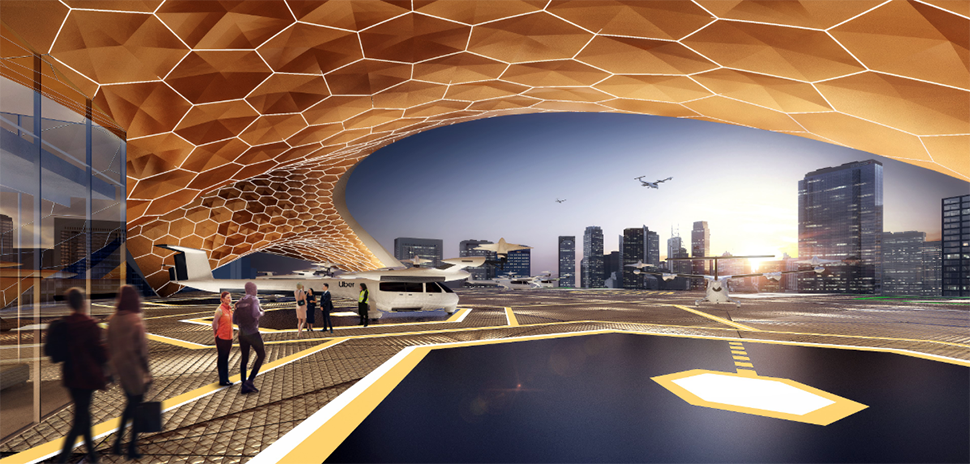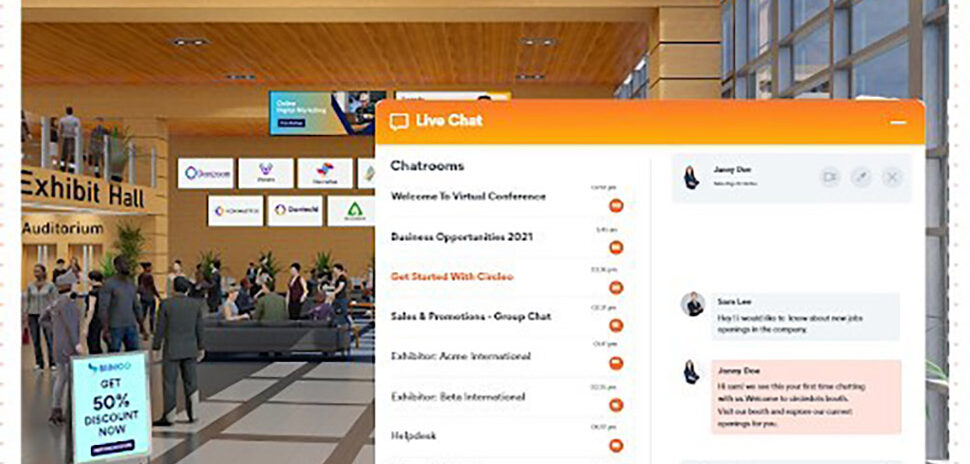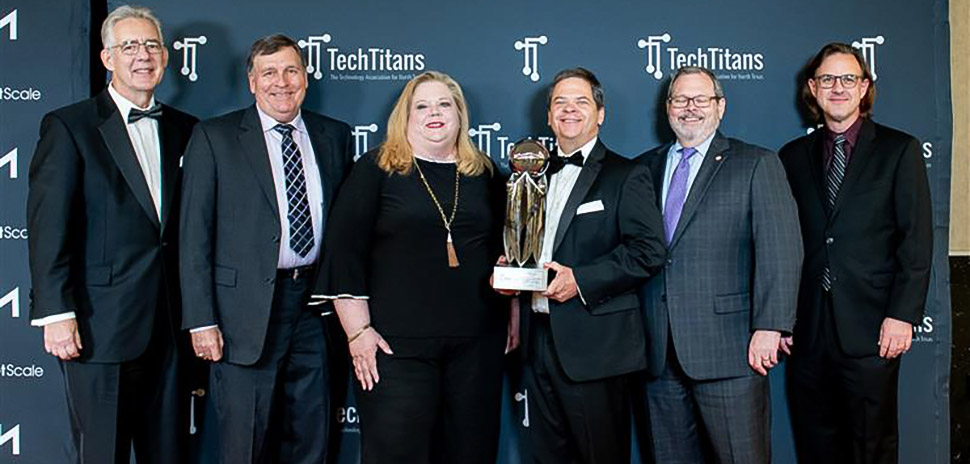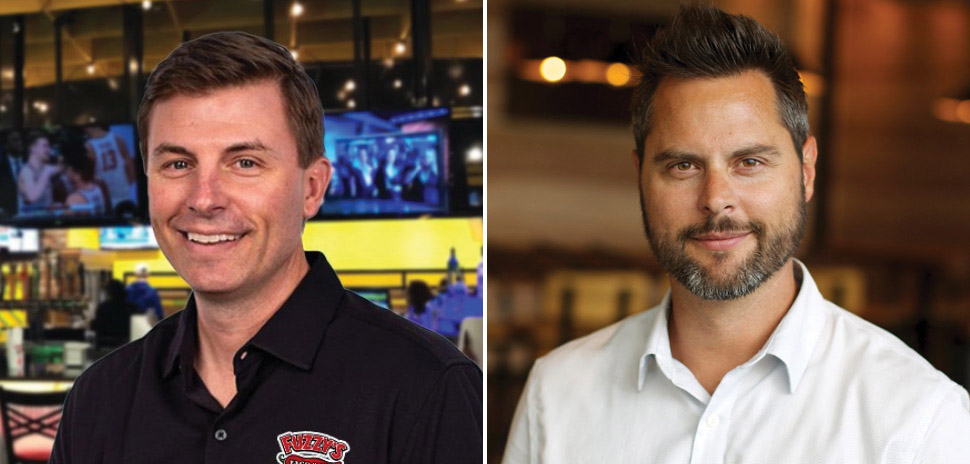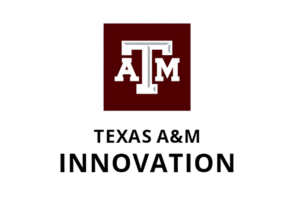In October, Uber Elevate reaffirmed that North Texans likely will see its vertical takeoff air taxis cruising the skies over Dallas-Fort Worth by 2023. Advanced military aircraft and helicopters will continue to roll off North Texas assembly lines. And, millions of passengers will fly on Dallas-Fort Worth-based airlines to locales in the U.S. and across the globe.
All of those are signs that the aviation and aerospace industries in North Texas—some 900 companies strong—are continuing to grow and innovate. North Texas cities benefit from the corporations and businesses that call the region home, bringing with them tens of thousands of jobs, new residents, and a thriving economy.
From fighter jets and giant commercial airliners to luxurious corporate aircraft and technologically advanced helicopters and air taxis, Dallas-Fort Worth is at the forefront of the aviation industry.
Aviation is a driving force of the North Texas economy, credited with helping attract Fortune 500 companies, high-tech startups, and massive logistics hubs. By most accounts, aviation is a linchpin in the region’s booming real estate sector and a driving force behind high-tech manufacturing and research.
Dallas Fort Worth International Airport alone pumps an estimated $37 billion into the local economy each year. Add in Dallas Love Field, Fort Worth Alliance Airport, a network of roughly 20 municipal and corporate airports, and some of the biggest aerospace manufacturers in the world, and it’s easy to see how aviation is in the captain’s seat of the region’s economic well-being.
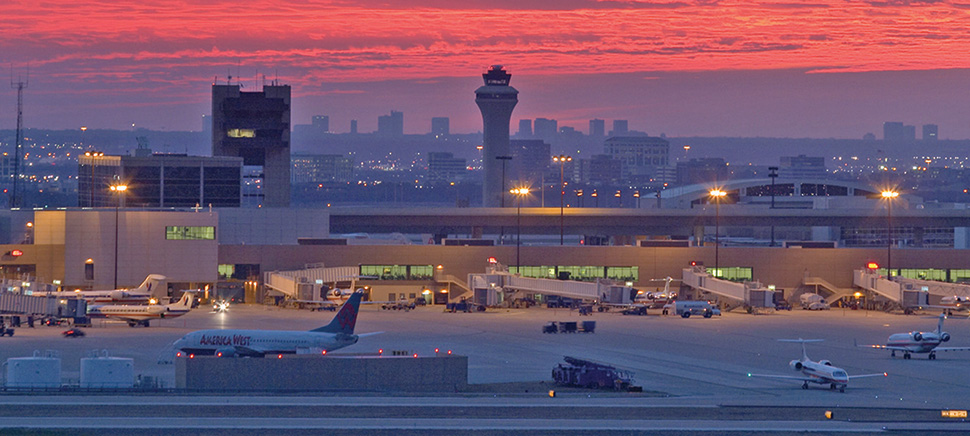
[Photo: Courtesy DFW International Airport]
“DFW grew up on aerospace. A lot of people don’t realize that,” Hillwood Executive Vice President Bill Burton says. “For many years, we had the third largest aviation employment base in the country. To us, it’s really not surprising that this would be a place where you see innovation in aerospace because it’s part of the history and evolution of aerospace.”
When the word aviation is attached to Dallas-Fort Worth, it conjures up a lot of famous names. Think American Airlines, Southwest Airlines, Lockheed Martin, Bell Helicopter, Airbus, Rolls Royce, and Boeing, to name a few.
From the F-35 Lightning II assembly line in Fort Worth to Uber Elevate’s plans for an on-demand air taxi network connecting Dallas Fort Worth International Airport to Frisco and downtown Dallas, North Texas continues to be on the cutting edge of aviation innovation. Here are the stories behind some of the industry’s biggest names.
Airports helped North Texas take off
Dallas Fort Worth International Airport opened for commercial flights in January 1974 at a cost of roughly $700 million. The previous September, an open house and dedication ceremony was held featuring the first landing of a supersonic Concorde airliner in the United States and an Air France aircraft en route from Venezuela to Paris.
Since its opening, DFW Airport has grown into the fourth-busiest airport in North America by number of passengers. It is the largest hub of Fort Worth-based American Airlines, which has flown out of the airport from its first days. Today, more than 80 airlines and freight carriers operate from the airport, bringing people and commerce into North Texas.
Like Kubota Tractor Corp. in Grapevine, many companies have located their headquarters, logistics, and fulfillment operations near DFW Airport, which covers 17,207 acres and is larger than the island of Manhattan. It’s the second-largest airport in the United States by land area.
As big as it is, DFW Airport is still growing—planning to build a sixth terminal (Terminal F) and renovate Terminal C to the tune of $3 to $3.5 billion by 2025. Airport CEO Sean Donohue said the new terminal will add up to 24 more gates at DFW.
At the expansion announcement in May, then-Dallas Mayor Mike Rawlings lauded American Airlines’ support for the airport’s growth because it is good for North Texas.
“To have a partner like American Airlines that believes in this region—that believes in this airport—says that the growth cycle of this town is going to continue to grow,” Rawlings said.
READ NEXT Rolls Royce Makes Closed Alliance Facility Home, Sweet High-Tech Home
Along with the expansion, DFW Airport is evolving new technologies to meet demand and industry trends.
“A couple of early innovative projects are paying dividends for our customers,” Donohue says. “We have installed dynamic glass in Terminal A. This technology automatically tints windows, [thereby] reducing heating, saving air-conditioning loads, and creating more comfortable gate rooms for our passengers.”
Also, DFW Airport is in a pilot program testing first-of-its-kind robotic technology to help customers get their bags with a minimum of hassle. The Vanderlande autonomous vehicle solution can handle up to 450 bags an hour.
To the east, sits Dallas Love Field, once the dominant airport in the region before DFW Airport was opened.
Six miles northwest of downtown Dallas, the airport is convenient for businesses and people who live and work in Dallas’ urban core.
“Dallas is growing, and air travel is growing. As a result, we see annual upticks in the number of customers we are serving,” city of Dallas Director of Aviation Mark Duebner tells the Real Estate Review. “With our proximity to downtown Dallas, ease of use, and customer-first hospitality, we’re always aiming to create an experience where customers want to choose Dallas Love Field. As they do that, we’ll continue to be a contributor to one of the country’s largest economies.”
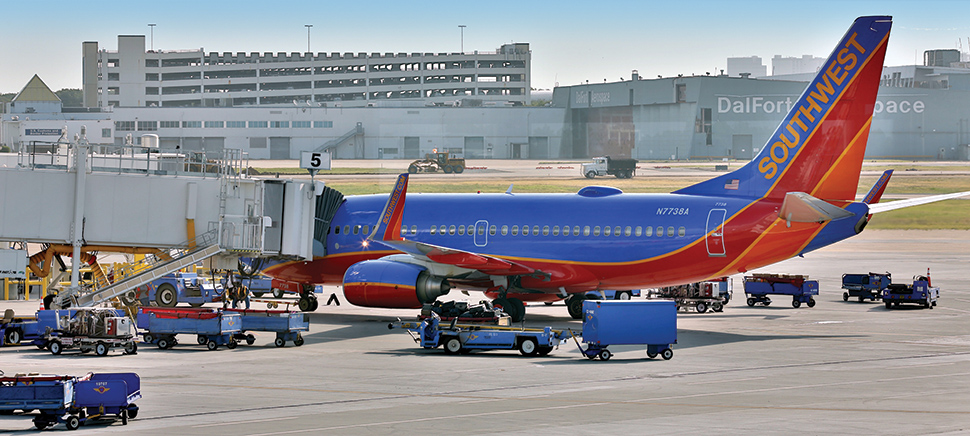
[Photo: Courtesy Dallas Convention and Visitors Bureau]
Love Field is important to the region’s growth because of its urban location and because it is the biggest hub of the world’s largest low-cost air carrier, Southwest Airlines, which maintains its headquarters at the airport. Its large training center is adjacent to Love Field.
The history of Love Field dates back to 1917, when the U.S. Army announced it would create camps to train prospective pilots after the nation entered World War I. Indeed, the airport is named for Moss L. Love, an Army aviator who died in 1913 in an airplane crash near San Diego, California.
Besides Southwest Airlines, American used to fly from the airport, as did Pioneer Airlines, Braniff International, Continental, Delta, Pan Am, and Trans Texas.
As Love Field grew, so did the area around it. Businesses, hotels, and restaurants have found the neighboring streets to be inviting locations.
When it comes to real estate, however, you need to look no farther than Fort Worth Alliance Airport to see the impact aviation can have on the land around it.
Opened in 1989 as the world’s first purely industrial airport, Alliance is owned by the city of Fort Worth and managed by Ross Perot Jr.’s Alliance Air Services, a subsidiary of Hillwood.
The airport is at the heart of the massive AllianceTexas development that is home to large residential, retail, and industrial properties. And, the airport is the centerpiece of an intermodal facility that ties aviation, rail, and trucking into a logistics megahub.
Amazon Air announced in late 2018 that it plans to open an innovative Regional Air Hub at the airport. The facility is planned to be operational this year and could lead to hundreds of jobs for North Texas, Amazon says.
Earlier this year, Hillwood announced that it plans to turn the 26,000-acre AllianceTexas development into the “AllianceTexas Mobility Innovation Zone,” where new transportation technologies can be developed and deployed, including autonomous cars and trucks and high-flying drones and air taxis.
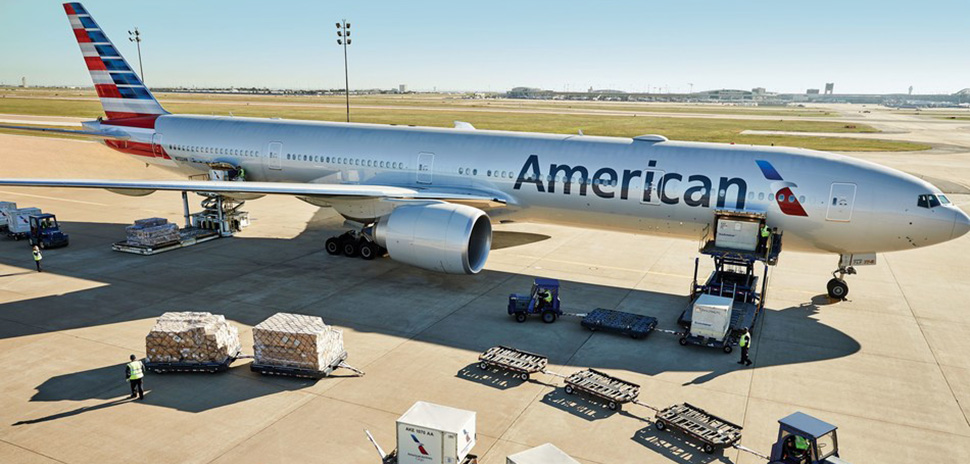
[Photo: Courtesy American Airlines]
Airlines at the core of Dallas-Fort Worth aviation
If you took a time machine back to April 15, 1926, you’d see Charles Lindbergh flying the first flight of what would become American Airlines carrying U.S. mail from St. Louis, Missouri, to Chicago. That early incarnation of the airline flew mail routes for eight years before forming into the world’s largest airline.
Headquartered in Fort Worth, American Airlines formed in 1930 through the union of more than 80 small air carriers. The actual name of the airline dates to 1934, when new laws and the attrition of mail contracts led many airlines to reorganize.
In June 1936, American Airlines was the first airline to fly the legendary DC-3 in commercial service from New York to Chicago. In 1953, the airline pioneered nonstop transcontinental service across the nation using the Douglas DC-7.
American Airlines relocated its headquarters in 1979 from New York City to Fort Worth, where today the company is constructing a massive new headquarters facility not far from Dallas Fort Worth International Airport to accommodate its growing workforce.
The airline also announced it is building a $250 million hotel on the headquarters campus that will have 600 rooms and a conference and training center. It’s intended for employees who live outside the DFW area to reside in while they attend training.
While Dallas-based Southwest Airlines’ aviation saga isn’t as long as American’s, its more-than-50-year history is one filled with larger-than-life characters, a high-flying business plan, and a string of catchy advertising slogans, such as, “Love is Still Our Field,” “You’re Now Free to Move About the Country,” and the current “Low Fares. Nothing to Hide. That’s TransFarency.”
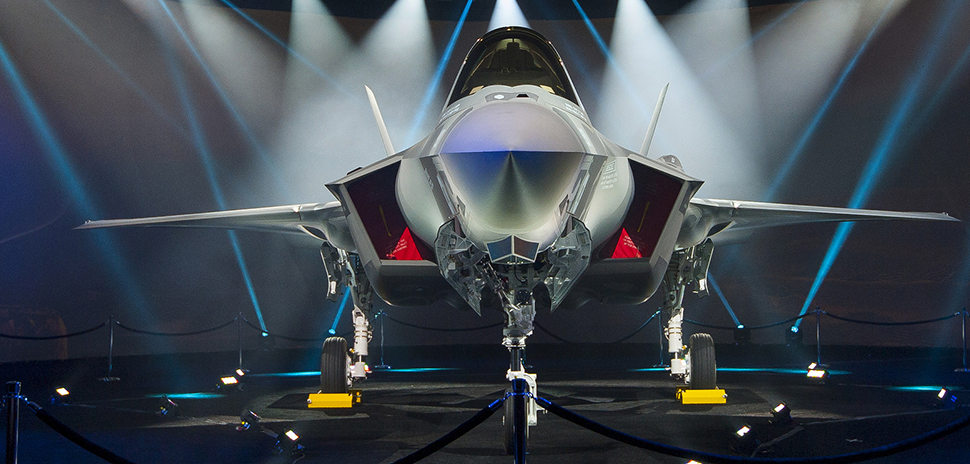
[Photo: Courtesy Lockheed Martin Aeronautics]
Southwest was formed in 1967 by the late Herb Kelleher and Rollin King as an air carrier that operated wholly in the state of Texas, flying between Dallas, Houston, and San Antonio. Today, it is the world’s largest low-cost airline operating more than 4,000 flights a day during peak travel season.
In 1979, the U.S. Congress passed what was known as the Wright Amendment to protect Dallas Fort Worth International Airport from competition. The amendment effectively limited Southwest’s direct flights from Love Field to Texas and the four adjoining states.
After years of legal and legislative battles over the amendment, Congress allowed it to expire in 2014, letting Southwest to fly nonstop from Love Field to any city in the nation.
Defensing a nation
The biggest name in the DFW defense industry is Fort Worth-based Lockheed Martin Aeronautics and its massive plant in West Fort Worth, which has a history as storied as the city in which it sits.
In the years before the attack on Pearl Harbor, Fort Worth and Dallas were competing to see who could entice the War Department to build a plant and air base in their city.
It was a running battle between Fort Worth and Dallas, Lockheed Martin F-35 Development Manager Kevin McCormick says. “It all started with the Fort Worth Star-Telegram. There were a lot of things that played back and forth between Washington, D.C., and here to get the war department to build here.”
Fort Worth leaders pulled out all the stops, first offering to lease the land to the war department and eventually deciding to donate it outright. Fort Worth’s gamble paid off when President Franklin D. Roosevelt approved the construction of an airfield.
Around that same time, Fort Worth booster and Star-Telegram publisher Amon Carter Sr. urged airplane manufacturer Consolidated Aircraft to build a 1.25-mile long plant, known at the time as United States Air Force Plant 4. The airfield was built, and the factory was constructed next to it.
Since everything is bigger in Texas, the plant boasted an extra 25 feet on one end just so it could be bigger than its sister plant in Tulsa, Oklahoma. It was the largest air-conditioned facility in the world at the time. Ironically, the location wasn’t widely publicized during World War II because it was so critical to the war effort.
In April 1942, the first Consolidated B-24 Liberator bomber rolled off the assembly line. The B-24 became a workhorse for the U.S. Army Air Forces in World War II.
Consolidated, Consolidated Vultee, Convair, General Dynamics, and Lockheed Martin have operated from the plant, which over the years produced the short-lived B-32 bomber, the massive B-36 Peacemaker, the B-58 Hustler—the world’s first supersonic bomber—and the Vietnam-era stalwart F-111 Aardvark.
Most famously, however, the plant built 4,588 F-16 Fighting Falcon fighter jets from the 1980s until 2017.
“Ten thousandths of an inch isn’t much to anybody, two or three hairs on your head. But it’s a big deal to us. Everything about a stealthy airplane has got to be precision.”
Don Kinard
Now, nearly 80 years after the plant opened, the legacy lives on as Lockheed’s Fort Worth plant produces three variations of the stealthy F-35 Lightning II, the world’s most advanced—and expensive—fighter jet. Production already is in full swing with about 11 F-35s rolling off the assembly line every month, McCormick says. The goal is to produce up to 14 F-35s a month at a cost of $70 million to $90 million. The plant has produced more than 400 F-35s for the United States and allies around the world.
The Pentagon announced recently an agreement with Lockheed for the next group of nearly 500 F-35s at a unit price of just under $80 million per plane.
While other sites produce the F-35, either in parts or final assembly, Fort Worth’s location is the only one that makes all three variants.
Technology plays a large role in the plant’s ability to coordinate parts, tools, and fasteners for a 1.25-mile-long plant where the tiniest fraction of an inch matters.
“Ten thousandths of an inch isn’t much to anybody, two or three hairs on your head,” says Don Kinard, a senior fellow at Lockheed Martin. “But it’s a big deal to us. Everything about a stealthy airplane has got to be precision.”
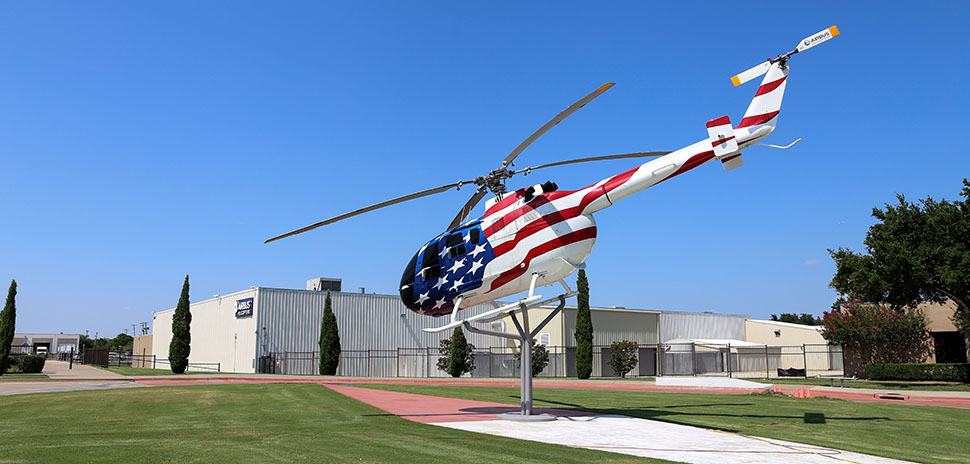
A statue outside Airbus Helicopter Inc’s Grand Prarie headquarters. Airbus Helicopters is currently celebrating 50 years in business. [Photo: Rachel Walters]
Each workstation has a screen that displays vital information about the progress of that particular aircraft, potential problems, percent complete, and who the customer is.
“The cool part is, not only do we display it out here, but I can get all this data on my phone,” Kinard says.
The assembly line will get 60 new robotic systems in the next four years. That doesn’t mean they’ll be cutting jobs, though.
Kinard says the machines are focused on jobs that are dangerous, dull, or dirty, such as drilling holes and installing rivets.
“Those things we do try to automate,” Kinard says. “Most of the automation, I would say our mechanics love it.”
The plant also uses augmented reality projections to show where parts go on the plane.
During World War II, Grand Prairie also was at the heart of the nation’s air power efforts. In 1940, North American Aviation broke ground on its new plant in the city, just west of what later would be known as Dallas Naval Air Station.
Such famous aircraft as the AT-6 Texan and the legendary P-51 Mustang were made by North American. At peak production in 1944, North American employees were working 24 hours a day in three shifts to meet demand for the aircraft.
During the Korean Conflict, the Vought aircraft company used the facility to produce its iconic gull-winged F4U Corsair fighter. You’d recognize them from the Black Sheep Squadron. During the Vietnam War, LTV Corp. used the plant to build its highly successful Corsair and Crusader aircraft.
Giving Dallas-Fort Worth a vertical lift
Fort Worth-based Bell, a Textron company, and Grand Prairie’s Airbus Helicopter are two of the world’s leading makers of advanced commercial, public safety, and military helicopters.
Bell—which dropped “Helicopter” from its name last year—moved its headquarters to Fort Worth from Buffalo, New York in 1951, after Bell Aircraft Corp. founder Lawrence Bell decided to separate his helicopter operations from his airplane business.
According to Vertical Flight Society (VFS), Bell made the move for several reasons, including reducing the friction between the airplane and helicopter divisions in New York.
“I want an organization that thinks helicopters morning, noon, and night … we have a great variety of projects in Buffalo. The staff doesn’t have time to give more than a lick and a promise to the helicopter,” Bell reportedly told his board of directors at the time, according to a report by VFS.
Bell needed room to expand, according to VFS, and the company liked Fort Worth’s warm weather and the friendly reception from Fort Worth’s civic and business leaders.
Ground was broken on Bell’s Fort Worth plant on May 21, 1951, with 300 military and business leaders in attendance. The new site covered 55 acres and became home to the first factory in the world specifically designed for the manufacture of helicopters, VFS says.
Last year, Bell announced a $114 million expansion of the Fort Worth headquarters that includes a $16 million, 300,000-square-foot “Factory of the Future,” and the creation of 400 jobs over five years.
Further west in Grand Prairie, Airbus has established itself as one of the world’s top manufacturers of helicopters.
Airbus already is a mecca for training pilots and mechanics worldwide, but a new $40 million facility under construction will bring even more pilots to the facility for state-of-the-art training.
The 17,000-square-foot Helisim LLC Simulation Center will house two giant, egg-shaped simulators that can accurately simulate flying the Airbus H145 and H175 helicopters.
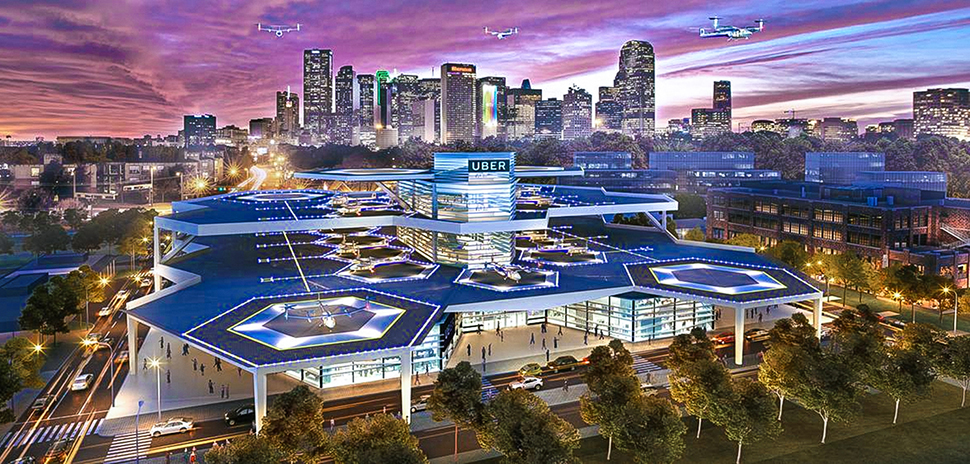
Uber Elevate will operate in Dallas-Fort Worth [Rendering: Uber Elevate]
Helisim—a joint venture with Airbus Helicopter, Thales AVS, and Defense Conseil International—is expected to bring several thousand pilots to Grand Prairie per year starting in 2020 when the first simulator arrives. Construction company McCarthy is the contractor on the project, which broke ground on the structure in May and it is expected to be completed in March 2020.
The simulator projects the entire range of vision for the pilot in all directions, including a spinning whirl at the top to simulate the propeller blades going around. A second identical simulator will go online in 2021.
Each simulator costs $15 million and requires several feet of concrete foundation to support the hydraulics that allow it to simulate the forces of a real helicopter.
Even after their initial training, pilots have to come back for refresher courses every so often to stay up-to-date.
Lindsey Cunningham, Airbus’ head of customer training for North America, says its longest class runs for four weeks, and with the new simulators thousands of additional pilots will come every year.
That’s great news for the hotels, restaurants, and other economic development that’s centered around the President George Bush Turnpike on Arkansas Lane in Grand Prairie.
Airbus Helicopter in Grand Prairie also does completions for specialized helicopters. They do luxury completions for VIPs, including Dallas Cowboys owner Jerry Jones; police applications, including the Israeli police; and surveillance like the U.S. Customs and Border Patrol, which has 120 Airbus helicopters in its fleet, Cunningham says.
Air taxis could propel our future
North Texas will be among the first places in the world to have Uber Elevate’s air taxis shuttling people over rush hour traffic to their destinations.
Five Dallas design firms—Beck Group, BOKA Powell, Corgan, Gensler, and Humphreys & Partners—have unveiled their concepts for the heliport stations for the future VTOL (vertical take-off and landing) aircraft.
Dallas-based Hillwood is an early Uber Elevate partner, and Hillwood’s AllianceTexas is home to the Federal Aviation Administration’s Southwest Regional Headquarters.
While it sounds futuristic, Samantha Flores, who leads the innovation and research team at Corgan, says air taxis are coming to North Texas.
“We definitely looked at Frisco and downtown Dallas as having a great population for early adopters,” Flores says. The most popular Uber route in North Texas is going from the Frisco area to DFW Airport, so a heliport at DFW Airport also makes sense, she says.
The heliports would gravitate toward highways. Some will be built above highways and others along the highway frontage, which solves several problems. Because helicopters typically fly in sky lanes that follow highways, they’ll be following that route anyway. And, the highway frontage makes it convenient for passengers.
Building a skyport on top of an elevated highway also provides development opportunities underneath a highway, Flores says.
“All that land is completely underutilized, marginalized space that’s in every city,” she says. “I think we have local developers that are willing and able to help us look for land and help us gather the available property to do it. We also have two major airports that are willing, able, and excited about the future of the economy in this market.”
Because it’s Uber, the skyports will seamlessly connect to other transportation options. “You land and instantly get connected to an autonomous fleet of electric vehicles,” Flores says. “When someone lands on the flight deck above, it already connects them to the Uber ground fleet. Or they can grab a scooter, a bike, or walk, or connect to DART (Dallas Area Rapid Transit).”
Someday, the Uber Elevate traveler could connect to the proposed bullet train for a 90-minute, 200 mph trip to Houston.
DFW Airport to Frisco flights could start in 2023. At least initially, they’ll be using existing parking garages at the airport. And the vertical take-off and landing (VTOL) aircraft will have pilots.
Fort Worth-based Bell Helicopter is developing its own hybrid VTOL aircraft for Uber Elevate. The goal is to migrate to an all-electric version that would have fewer moving parts and need less maintenance with autonomous technology eventually eliminating the need for pilots.
All this combines to drive the price down for consumers so the average commuter can afford a ride.
Quality in workforce & products
The specter of World War II brought aircraft manufacturing to Fort Worth, but it’s the quality of the workforce that has kept companies such as Lockheed, Bell, and Airbus Helicopters thriving in North Texas.
“They have to be mechanics first of all,” Lockheed Martin’s Don Kinard says. “They are people that are trained to be mechanics in school or in the military.”
In addition to the 4,000 jobs at its plant, Lockheed creates jobs throughout North Texas with its suppliers and others who indirectly work on the aircraft. The same holds true for Bell and Airbus.
“The F-16 for this area of Fort Worth has been the economic driver for about 40 years,” Kinard says. “And this program [F-35] is going to last about another 30 to 40 years, too. You’ve got other people who have been supplying into that chain. And that draws in talent. People who aren’t involved see all this talent around it attracts more talent. It’s not just having a mile-long factory. It’s having the right people to come in and work it.”
Key aviation & aerospace players in North Texas
Triumph Group
Headquarters: Berwyn, Pennsylvania
Local locations: Arlington, Grand Prairie, Red Oak
Type of company: Aircraft overhauls and repairs
2019 fiscal year revenue: $3.4 billion (company wide)
Products: Aircraft control systems, electronics, parts
Major customers: Boeing, General Electric, Airbus, Rolls-Royce, Delta, Gulfstream, Northrup Grumman, and Lockheed Martin
Recent deal: Selling Triumph Fabrications unit, including the Fort Worth location, to a Maryland private equity group
Recent contract: Red Oak facility won a contract to build components for a military training jet.
Amazon Air’s Regional Air Hub
Headquarters: Seattle, Washington
Local locations: Alliance Airport, Haslet
Type of company: Will provide sortation capability for Amazon Air with multiple daily flights
Second quarter net income: $2.6 billion (company wide)
Recent deal: The Regional Air Hub was announced in December 2018.
Boeing Global Services
Headquarters: Plano
Type of company: Finds solutions to supply chain, digital analytics, engineering, training, and other aircraft-related challenges
Year founded: 2017
Rolls-Royce
Headquarters: London, United Kingdom
Local locations: Alliance Airport, Fort Worth
Type of company: Aircraft engine manufacturing and testing
Products: Conducts endurance test runs for aircraft engines
Major customers: Boeing and Airbus
History: The Alliance Rolls-Royce jet engine test facility opened in 2018. Prior to that, there was a joint venture maintenance, repair, and overhaul facility with American Airlines there.
Safron Seats USA
Headquarters: Gainesville
Type of company: Manufactures seats for aircraft
Products: Manufactures, tests, certifies, and produces parts for aircraft seats
Production: More than 1 million seats in service
Customers: More than 150 aircraft company customers worldwide
Employees: 6,500 in five countries
Year founded: 1961
EXOS Aerospace Systems & Technologies Inc.
Headquarters: Greenville
Type of company: Develops and launches reusable rockets for private space flight and launches payloads for research into space.
Why they’ve been successful: Payloads are launched and spend time in zero gravity, then the rocket returns so the payload can be accessed quickly.
Read the digital edition of Dallas Innovates’ sister publication, the Real Estate Review, on Issuu. The Dallas-Fort Worth Real Estate Review is published quarterly. Sign up for the digital alert here.
![]()
Get on the list.
Dallas Innovates, every day.
Sign up to keep your eye on what’s new and next in Dallas-Fort Worth, every day.










